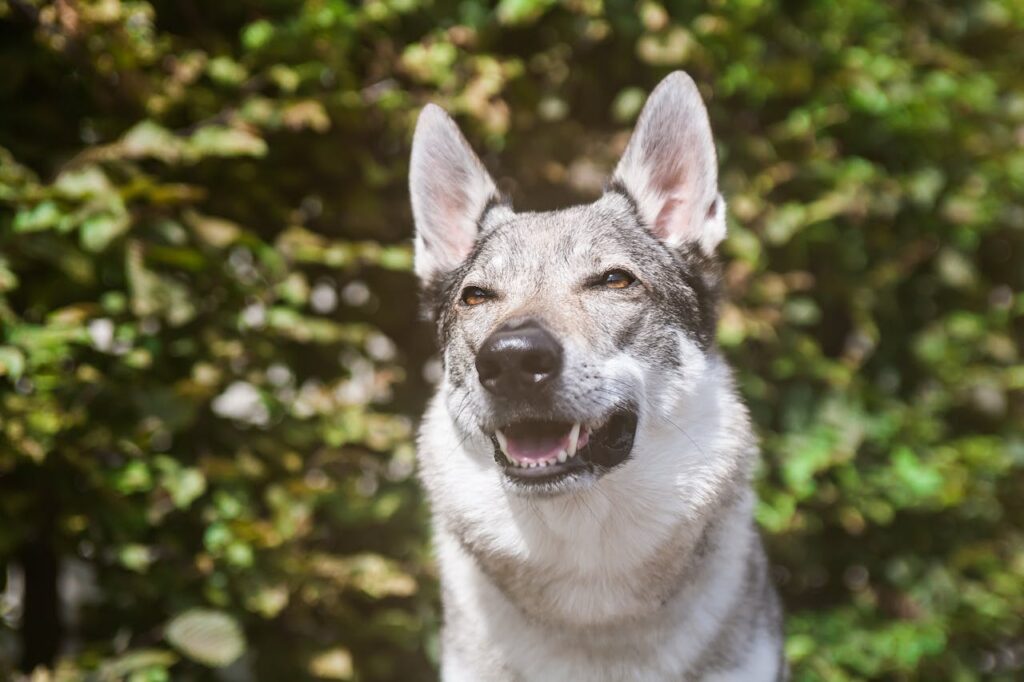Millet, a gluten-free grain, is rich in nutrients like fiber, protein, and vitamins. It’s measured in grams or cups. Millet serves as a healthy carbohydrate source in dog diets, supporting energy and digestive health when incorporated appropriately into feeding plans.
In this post, we’ll see whether you can feed your dog millet, what are its benefits, harmful effects and most importantly, things to know (facts) about millet. Additionally, we would also take a look at the nutritional value and the proper way to feed dogs, millet. Finally, we will answer the most important questions about this topic and share the final verdict.
But, firstly – let’s see, can dogs eat millet?

Table of Contents
ToggleCan Dogs Eat Millet Safely?
Yes, dogs can eat millet safely. Offer 1/4 to 1/2 cup cooked millet per 20 pounds of dog weight. Serve plain, cooked, and cooled. Ensure no added seasonings. Millet is rich in fiber, protein, and vitamins, aiding digestion and providing energy. It’s beneficial as part of a balanced diet for dogs.
Benefits of Feeding Your Dog Millet (3 Benefits)
Millet is beneficial to dogs. Here is a list of 3 benefits of millet for dogs:
- Improved Digestive Health: Millet is rich in fiber, aiding digestion and promoting bowel regularity in dogs.
- Enhanced Energy Levels: With its complex carbohydrates, millet provides a sustained release of energy, keeping dogs active throughout the day.
- Nutrient-Rich Diet Addition: Millet offers essential nutrients like protein, vitamins, and minerals, supporting overall health and well-being in dogs.
Harmful Effects of Feeding Your Dog Millet (3 Harms)
Millet is beneficial to dogs, but it can be harmful in certain circumstances. Here is a list of 3 potential harmful effects of millet for dogs:
- Digestive Upset: Excessive consumption of millet can lead to digestive upset in dogs, including diarrhea or vomiting.
- Allergic Reactions: Some dogs may be allergic to millet, leading to allergic reactions such as itching, skin rashes, or gastrointestinal issues.
- Weight Gain: Millet is calorie-dense, and overfeeding can contribute to weight gain and obesity in dogs.
Things to Know About (Facts) about Millet
In this section, we will discuss some facts and things to know about millet.
| Attribute | Description |
|---|---|
| Gluten-Free | Millet does not contain gluten, making it suitable for individuals with gluten sensitivities or allergies. |
| High in Fiber | Millet is rich in dietary fiber, promoting digestive health and aiding in bowel regularity. |
| Protein Source | Millet provides a good source of plant-based protein, essential for muscle maintenance and growth. |
| Rich in Vitamins | Millet contains various vitamins, including vitamin B, E, and K, contributing to overall health and well-being. |
| Mineral-Rich | Millet is abundant in minerals such as iron, magnesium, phosphorus, and zinc, supporting various bodily functions. |
| Low Glycemic Index | Millet has a low glycemic index, making it suitable for diabetic individuals and helping maintain stable blood sugar levels. |
| Easily Digestible | Millet is easily digestible, making it gentle on the digestive system and suitable for sensitive stomachs. |
| Versatile | Millet can be incorporated into various dishes, including porridge, salads, side dishes, and baked goods. |
| Sustainable | Millet cultivation requires less water and resources compared to other grains, contributing to environmental sustainability. |
Nutritional Value of Millet
In this section, we will discuss the nutritional value of millet.
| Nutrient | Value per 100g | Unit |
|---|---|---|
| Calories | 378 | kcal |
| Protein | 11.02 | g |
| Fat | 4.22 | g |
| Carbohydrates | 73.97 | g |
| Fiber | 8.5 | g |
| Sugars | 0.47 | g |
| Calcium | 8 | mg |
| Iron | 3.17 | mg |
| Magnesium | 114 | mg |
| Phosphorus | 285 | mg |
| Potassium | 195 | mg |
| Sodium | 5 | mg |
| Zinc | 1.68 | mg |
| Vitamin C | 0 | mg |
| Thiamin (B1) | 0.42 | mg |
| Riboflavin (B2) | 0.29 | mg |
| Niacin (B3) | 3.95 | mg |
| Vitamin B6 | 0.38 | mg |
| Folate (B9) | 85 | mcg |
| Vitamin E | 1.05 | mg |
| Vitamin K | 0.7 | mcg |
How to Feed Dogs Millet?
Here we will explain in four proper steps how to properly feed your dog millet:
- Cook Millet: Boil millet in water until fully cooked. Ensure it’s plain with no added seasonings or spices.
- Cool Millet: Allow the cooked millet to cool down to room temperature before serving it to your dog.
- Serve Appropriately: Offer millet to your dog in small portions, gradually introducing it into their diet to avoid digestive upset.
- Monitor Reaction: Observe your dog for any signs of allergic reactions or digestive issues after consuming millet.
Things to Take Care of (Precautions) before feeding your Dog Millet:
- Consult your veterinarian before introducing millet into your dog’s diet, especially if they have existing health conditions or dietary restrictions.
- Start with small amounts of millet to ensure your dog tolerates it well before increasing the serving size.
- Avoid serving millet with added ingredients like spices, sauces, or oils, as they may be harmful to your dog’s health.
- Monitor your dog’s reaction closely after feeding them millet, and discontinue if any adverse effects occur.

Can Dogs Eat Alternative Forms of Millet?
In this section, we will discuss if dogs can eat alternative forms of millet such as cooked millet, millet flour and more.
Can dogs eat Raw Millet?
No, dogs should not eat raw millet. It can be difficult for them to digest, leading to potential digestive issues.
Can dogs eat Cooked Millet?
Yes, dogs can eat cooked millet. Offer 1/4 to 1/2 cup cooked millet per 20 pounds of dog weight. Serve plain and cooled, monitoring for any adverse reactions.
Can dogs eat Millet Flour?
It depends. Millet flour can be used in dog treats in small amounts, but large quantities may cause digestive upset due to its high fiber content.
Can dogs eat Millet Bread?
It depends. Plain millet bread without any added ingredients like raisins or nuts may be safe in small amounts as an occasional treat for dogs.
What Other Grains can a Dog Eat?
Here is a list of other grains that your dog can eat:
- Rice
- Quinoa
- Oats
- Barley
- Buckwheat
Frequently Asked Questions (FAQs)
In this section, we will discuss some frequently asked questions regarding millet and feeding them to dogs.
What is the nutritional content of millet?
Millet, a grain, is rich in nutrients, including carbohydrates, fiber, and vitamins like B-vitamins. Unlike wheat (another grain with gluten), millet is gluten-free, making it a suitable alternative for those with gluten sensitivities. However, it lacks amino acids found in quinoa, another grain, which is known for its complete protein profile.
Is millet safe for all dog breeds to consume?
Yes, millet is safe for all dog breeds to consume. It serves as a good source of carbohydrates and fiber, similar to rice, another safe grain for dogs. However, like with any food, it should be introduced gradually to avoid digestive upset, unlike chocolate, which is toxic to dogs.
How does millet compare to rice in a dog’s diet?
Millet and rice both serve as healthy carbohydrate sources in a dog’s diet. Millet provides more fiber and is gluten-free, making it a good option for sensitive dogs, unlike rice, which is lower in fiber but often easier to digest. Both grains should be served cooked and in moderation.
What are common symptoms of food allergies in dogs?
Here are 6 common symptoms of food allergies in dogs:
- Itching and skin rashes.
- Chronic ear infections.
- Vomiting.
- Diarrhea.
- Paw biting.
- Poor coat quality.
Conclusion
In conclusion, dogs can safely consume millet in moderation, benefiting from its nutritional value. Millet provides essential nutrients like fiber and protein, aiding in canine health. However, consulting a veterinarian for dietary guidance tailored to individual dogs is crucial for their well-being.



